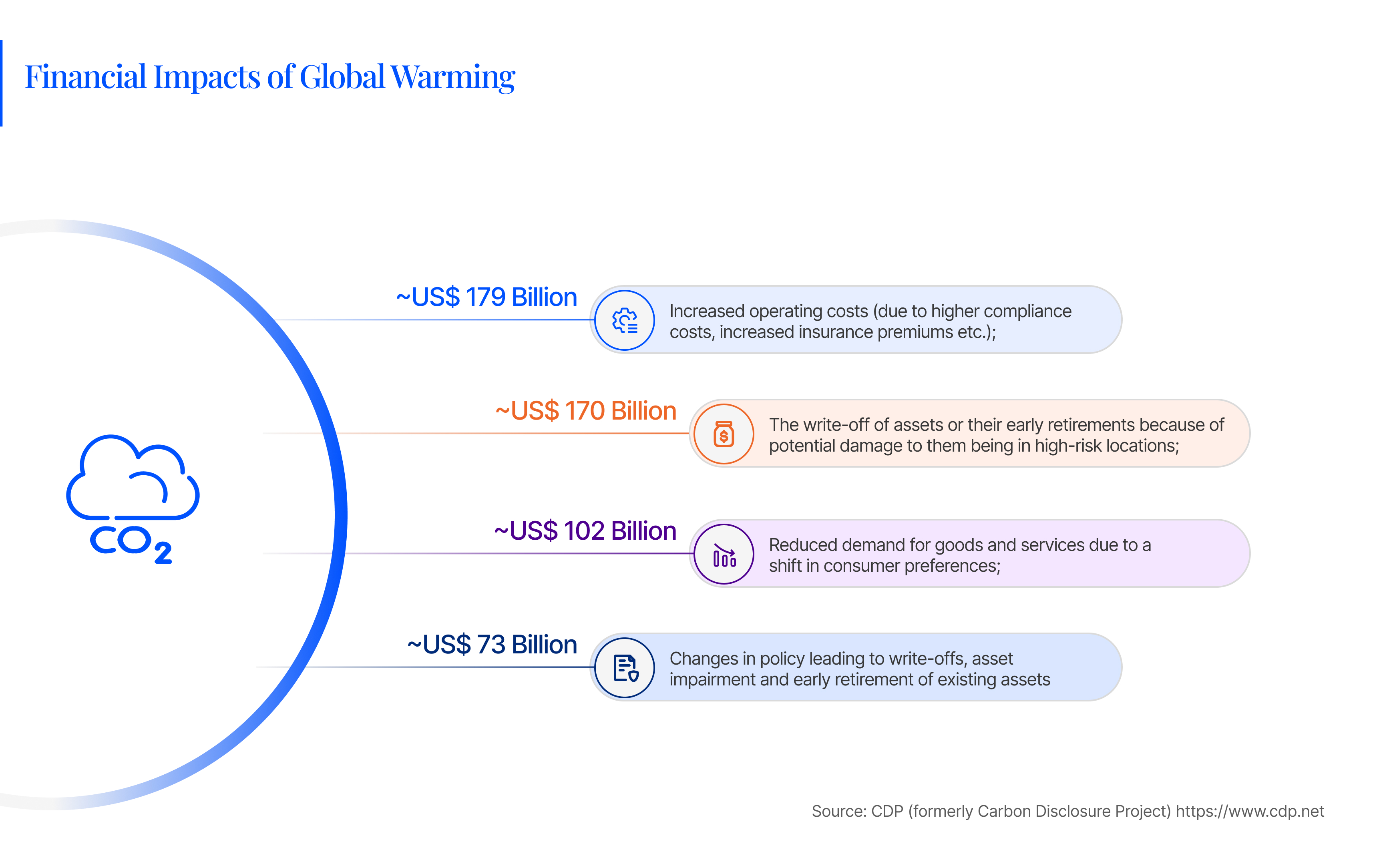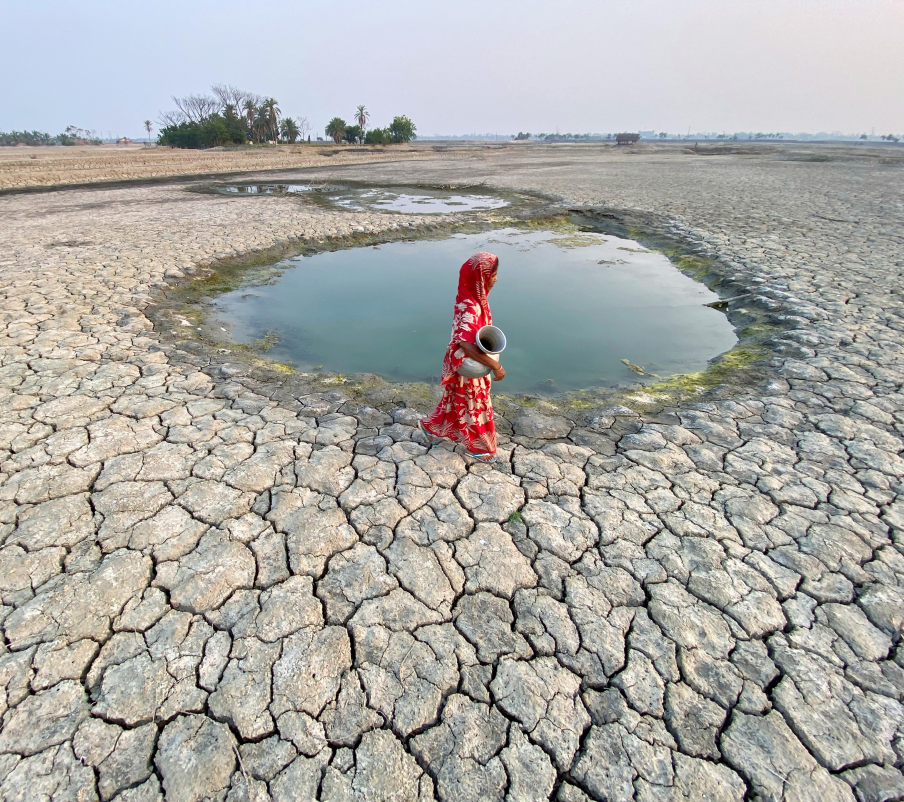Climate change, a threat that was once brushed off as a non-issue until a few decades ago, is now emerging as a full-blown crisis reshaping the global financial scene. It’s a serious environmental concern poised to disrupt industries, presenting major financial risks to individuals, corporations, and even entire countries. From extreme weather events to gradual environmental changes, the financial repercussions are becoming inevitable that demand immediate attention.
One of the most impactful ways climate change presents a massive financial risk is through physical risks, which arise from the increasing frequency and intensity of extreme weather events such as hurricanes, floods, droughts, wildfires, and heatwaves. These events can cause catastrophic damage to infrastructure, property, and agricultural land, leading to considerable insurance payouts, business disruptions, and supply chain failures. For instance, according to a report by the World Bank, the devastating floods that ravaged Pakistan in 2022 — largely attributed to climate change — resulted in an estimated $30 billion in damages and economic losses, upending various sectors and pushing millions into poverty.
Additionally, as the world moves towards a low-carbon economy, transition risks are becoming more apparent. These risks are linked to shifting market attitude, technological developments, and governmental changes aimed at mitigating climate change. Stranded assets, or assets that lose value or become outdated before their economic life is over, could stem from the shift for companies that rely heavily on fossil fuels or carbon-intensive operations.
The increasing adoption of renewable energy technologies and stricter emission regulations are already biting into the profitability of coal-fired power plants and oil and gas companies, as highlighted in reports by the Intergovernmental Panel on Climate Change (IPCC).

Liability Risks
Liability risks are also gaining prominence in addition to transition and physical threats. These stem from lawsuits aiming to hold governments and businesses responsible for harm brought on by climate change. The likelihood of climate change litigation against governments and high-emitting companies is growing as scientific evidence linking extreme weather events to climate change solidifies, posing substantial financial liabilities, a trend discussed in research published in Nature Climate Change. Examples of such cases include:
- Milieudefensie v. Royal Dutch Shell (2021, overturned in part 2024): The District Court of The Hague initially ordered Shell to reduce its carbon emissions by 45% by 2030 compared to 2019 levels, encompassing not only Shell's direct emissions but also those of its suppliers and customers (scope 3 emissions). This was a landmark ruling as it marked the first time a court had ordered a private company to greatly reduce its emissions in line with climate goals.
- Massachusetts v. Environmental Protection Agency (EPA) (2007): While not a traditional liability case seeking damages, this US Supreme Court decision was key. The court ruled that greenhouse gases qualify as "air pollutants" under the Clean Air Act, giving the EPA the authority to regulate them from mobile sources like vehicles.
- Lliuya v. RWE (Ongoing): This case seeks to establish a direct causal link between a company's historical emissions and specific climate change impacts. A Peruvian farmer is suing German energy giant RWE for a share of the costs to protect his town from glacial lake flooding, arguing that RWE's historical greenhouse gas emissions contributed to the glacier's melting. The fact that a German appeals court found the case admissible is a major development, potentially opening the door for future lawsuits seeking climate change-related damages from major emitters.
Other Financial Impacts: Water, Carbon, and Trade
Water Scarcity: Infrastructure and Investment Implications
According to report by the United Nations, global water scarcity is getting worse due to climate change. Reliable water-holding infrastructure has become the need of the hour for both drinking and industrial applications as droughts worsen and rainfall patterns grow more erratic. This trend carries several financial implications:
- Increased government spending: Governments are allocating higher budgets to develop reservoirs, desalination plants, pipelines, and wastewater recycling facilities. These large-scale projects are key to ensuring water security and climate resilience. For example, countries like Saudi Arabia and Singapore have heavily invested in water recycling and desalination technology.
- Rise in cement and steel demand: Infrastructure development requires cement, steel, and other construction materials, benefiting companies operating in these sectors. Firms such as LafargeHolcim, ArcelorMittal, and regional producers in Asia and the Middle East may see higher demand driven by water-related capital projects.
- Industry adaptation costs: Water intensive sectors — including agriculture, food processing, and textile manufacturing — will need to invest in efficiency upgrades, such as drip irrigation and closed-loop water systems.
Structure, Implementation, and Financial Effects of Carbon Credits
Carbon credits are a central component of global carbon pricing strategies. Each credit permits the emission of one tonne of CO₂ or equivalent gases. Under cap-and-trade systems, governments set a cap on emissions and distribute or auction off credits. Companies that emit less than their allowance can sell unused credits, while those exceeding their limit must purchase more. The EU ETS carbon price has increased significantly in the last 5 years. In May 2020, the price hovered around €25 per tonne, while in May 2025, prices had surged to €70per tonne, up 2.8x.
Countries Hit the Hardest
Many countries, particularly those with limited resources and high exposure to climate hazards, are feeling the heat of climate change.
Here are some examples of key weather shifts in the last 5 years that resulted in major crop damage, named by country:
2025:
- Brazil: Heavy rainfall and floods in the state of Rio Grande do Sul hugely impacted soybean fields and displaced over half a million people.
- Zimbabwe: A severe drought, linked to El Niño, ruined approximately half of the country's maize crop.
- Myanmar: Drought in central regions led to the ruin of maize, sesame, and mung bean crops.
2024:
- China: Extreme rainfall cost the country about 8% of its rice output over the preceding two decades, with a notable impact in 2024.
- Argentina: Drought led to lower production of soybeans, corn, and wheat.
- India: Late and heavy monsoon rains damaged the rice crop, leading to halted exports of some rice categories.
2023:
- Pakistan: Extreme rainfall from monsoons caused devastating floods, killing thousands, displacing millions, and causing billions of dollars in damage to crops.
- United States (California): A severe drought hit the rice belt hard, with growers planting only half as much rice as usual, leading to substantial economic losses.
2022:
- Belgium: Severe flooding across Europe caused substantial damage to the agricultural sector, including long-term soil erosion.
- United States (Midwest): Flooding shortened the corn planting season, leading to a reduced projected yield.
2021:
- Horn of Africa: The beginning of a protracted drought, which continued to deteriorate in subsequent years, led to early crop losses.
- Australia: Bushfires burned vast areas of land, impacting agricultural regions.
Way Forward
The financial risks posed by climate change are not abstract; they are real, growing, and demand urgent action. Governments, financial institutions, and businesses must integrate climate considerations into their decision-making processes. This includes:
- Enhancing climate risk disclosure: As advocated by the Task Force on Climate-related Financial Disclosures (TCFD), investors and stakeholders must ensure transparent and standardized reporting of climate-related risks and opportunities.
- Mobilizing climate finance: To bolster mitigation and adaptation efforts, major investments are the need of the hour, particularly in vulnerable countries.
- Developing innovative financial instruments: green bonds, climate insurance, and other financial tools can help manage and transfer climate risks.
Conclusion
We will ignore the financial implications of climate change only to our detriment. By appreciating and proactively addressing these risks, we can build a more resilient and sustainable financial system for the future. It’s time we prepared with rigor and foresight to deal with a gathering storm on the horizon.
Contributor

Adeel Ahmed
Research Editor

Share With